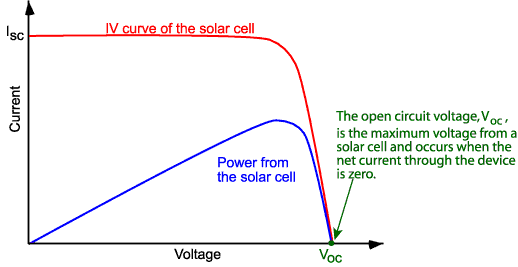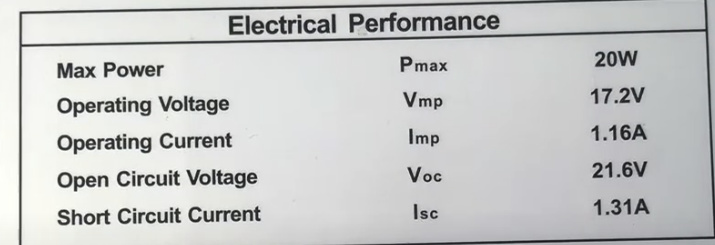I started testing the new 300W 625 solar panel yesterday. It’s an unbelievably slick package.
Anker 625 Solar Panel
Looking forward to your review.
Did they wire any panels in serial?
Test: partially block one of the panels and see what happens.
I know this is a photo to demo the product working but please do put your Lithium car starter product in shade, it will be less likely to catch fire.
Write a detailed review please, when you did more tests.
Thank you.
What?!! You already got it??!! Cool, let us know what you think!!
It is on their official Japan page

No UK price, I also doubt it would come to UK any time soon but if you were to do a straight Yen to Pound and add tax is around £220, then add the duty I’d expect £250.
Curious how the solar panel doesn’t cast a shadow on the left foot. As if the image was made up in a computer…

Actor is very good, managed to hold perfectly still and swap to a different brand product wearing identical top changed in colour
 At least this one has a realistic shadow.
At least this one has a realistic shadow.
More pics
Good to know how many hours it takes. XX and YY. Fascinating.

I only took it out for the photo!
So far it’s really slick. Charged the jump starter at 16W via USB-C. Also got a 521 Power Station with it, and I’m trying to figure out how to charge it from the solar panel. It’s only taking 10W via USB-C.
There’s some restrictions written on the specs of max solar power for given Powerhouse.
So looks like you’re using meant to use the XT60 cable?
There it is. Wow, more than I thought it would be.
Yes 10% higher cost.
Did you pick up on the XT60 cable need to get >15W?
Purely from reading the specs:
- they say it’s high efficiency cells, well it’s the identical performance of the cells Anker and peers used for years, 23%
- so in typical conditions you’d see around 50% of peak so 300W I’d expect to see benchmarks showing 150W
- The XT60 is rated at 100W so to get the best of 150W you’d at a minimum use that plus one or more of the other ports.
- It would make most sense to pair this with their larger Powerhouse. Assuming 70% efficiency I’d expect to see benchmarks around 9-10 hours to recharge from 0% to 80%. All recharging is slower from 80% to 100% so say 4-5 hours 80%-100% for total 13-15 hours from 0% to 100%. That would equate to a typical sunny day of 2-4 days to recharge.
- Benchmarks required to know.
I have written in other threads that I am expecting more power outage, increasing in frequency and duration, but I also encourage to think portability as I’m expecting more needs to be able to leave home. Some of those needs to leave home can be via your vehicle (so size/weight not so important) but also some will need to be walking out so portability. As such these larger products complement the smaller products. I’d not encourage people to buy only these larger products. In my case I have multiple Powercore , higher wattage car chargers, and multiple smaller solar panels e.g. the Anker 21W panel.
Anker told me there’s no way to connect it to the 521 other than USB… if there is I’d love to hear about it.
Here are the panel specs from the user manual. My main question…
If one panel is rated at 5.55amps, and you wired 3 together to charge the anker 757, how would they all three put out max amps if the anker 757 is limited to 10amps?
Amazon shows 100 watt max output. Are you using 3 units to test for the 757 max input?
Because the panel is not actually 5.55A 18V, you would never see 100W.
There’s two issues:
- the open circuit voltage x maximum current is not the deliverable Wattage
- imperfect conditions.
On a perfect day you’d see around 2/3rds of that, on a good day around half.
It is because the open circuit voltage is higher than the closed circuit. Open circuit is when no electrons are flowing, so they are accumulating and giving a higher voltage. Closed circuit is when the electrons can flow, that voltage is lower. As the electrons flow and as the panel is in heat, it’s voltage drops and current drops. So actual Wattage you’d measure in perfect conditions is around 2/3rds the open-voltage x max current.


source
https://www.analog.com/cn/technical-articles/battery-chargers-unique-input-regulation-loop-simplifies-solar-panel-maximum-power-point-tracking.html
So what Anker is probably (I’m guessing from their other products) doing here is simply multiplying the open voltage by the (closed voltage) initial cold condition amps. You would never see that into the Powerhouse. You would see the closed voltage normal (hot) conditions amps which is typically around 2/3rd the theoretical (impossible in reality) quoted max.
So in reality you’d not see 3 x 5.55A 16.65A , you’d see 10A.
Hence the 757 max 10A matches real world.
Is that not being truthful? It isn’t particularly Anker misrepresenting, they simply are multiplying the specs of the panels they are using which is higher than actual.
Search solar open voltage vs closed voltage and amps over time on solar panels.
Anker doesn’t quote the supplier of their panels so I can’t look that up but he’s an example of non-Anker product

So here if you were to multiply the open circuit voltage by the short circuit current you’d see 21.6x1.31 = 28W, but the actual deliverable peak is 17.2x1.16= 19.95. 19.95/28= 0.7 i.e. 70%
The open circuit higher voltage is important as that is the initial voltage the wires and electronics would see so you have to specify every component to that higher open circuit voltage. Further, in strong sunshine initially you’d get a the quoted short circuit current briefly. So for a fraction of a second you’d see in these panels 100W but would drop very quickly in perfect sun conditions to around 70W. 3 panels would be 3x70W = 210W (not 300W) and a current of around 11.6A.
So a 10A 727 limit is not really wasting anything.
Of course a benchmark from a reviewer with the appropriate equipment is the best way to know how everything would work together. Pending the product being in the hands of such a qualified person you have my best guess above, accepting I could be wrong and so will edit later if anyone can share better data.
Anker’s previous solar product benchmark to give some confidence the rough 2/3rds rule in perfect conditions or more commonly half the quoted max in typical conditions. You see a thorough (old benchmarks but the technology is the same now) https://blog.easyacc.com/2016/05/17/9-usb-solar-charger-test-of-anker-easyacc-aukey/
Typo? It’s a 100W panel you can daisy-chain upto 3 of them via their bundled cables to get to 300W (actually 100W-150W just like their 21W was actually 10W-14W)
Hi,
I just bought the Anker 625 Solar Panel. However, if I connect it via the XT60 output to the DC in of my Anker 535 Powerhouse, it does not show any charging activity.
Is this intended and I can only charge via USB, or did I get a defective panel?
Just in case anyone has read my question, it turned out I just didn’t put the panel into sufficient sunlight. If I do, there is a small power light which is turned on and I get about 52W of solar charging power via the XT60 port. Which is not so great given that I tried this at noon in midsummer in direct sunlight, but then again, at least it works as it is supposed to. Yet I wonder if anyone has managed to get the panel at least close to the nominal 100W of output power.







